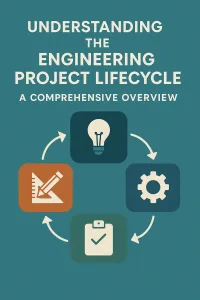Introduction
Status terms serve as the backbone of effective communication among team members, stakeholders, and clients. These terms, which include phrases like “on track,” “at risk,” or “delayed,” provide a snapshot of a project’s health and progress. They are essential for conveying critical information quickly and succinctly, enabling informed decision-making and fostering collaboration. As project management continues to evolve, particularly with the integration of new technologies, the language we use to describe project status is also likely to undergo significant transformation.
Staying current with trends in project management is crucial for professionals in the field. The landscape is rapidly changing, driven by advancements in technology such as artificial intelligence, data analytics, and cloud computing. These innovations not only enhance the efficiency of project management processes but also influence how status terms are defined and utilized. For instance, the rise of AI tools can automate routine reporting tasks, allowing project managers to focus on more strategic aspects of their work, while also providing real-time insights that can redefine traditional status terms.
Looking ahead, the future of project management status terms will be shaped by these technological advancements. As we embrace a more data-driven approach, we can expect to see a shift towards more nuanced and dynamic status terms that reflect the complexities of modern projects. This evolution will not only improve communication but also enhance the overall effectiveness of project management practices. By understanding and adapting to these changes, project management professionals can position themselves at the forefront of innovation, ensuring they remain relevant and effective in an ever-evolving landscape.
Current Landscape of Project Management Status Terms
Status terms play a crucial role in conveying the health and progress of projects. As the field evolves, particularly with the integration of new technologies, it is essential to understand the current landscape of these terms and their implications for communication and stakeholder engagement.
Overview of Commonly Used Project Management Status Terms
Project management professionals frequently utilize a set of standardized status terms to communicate project progress effectively. Some of the most commonly used terms include:
- On Track: Indicates that a project is progressing as planned, meeting deadlines and budget constraints.
- At Risk: Signifies potential issues that could jeopardize the project’s success, requiring attention and possibly intervention.
- Delayed: Refers to projects that are behind schedule, often necessitating a reassessment of timelines and resources.
- Completed: Marks the successful conclusion of a project, where all objectives have been met.
These terms serve as a shorthand for project health, allowing teams to quickly assess and communicate the status of their work.
Facilitating Team Communication and Stakeholder Engagement
The use of standardized status terms is vital for effective communication within project teams and with stakeholders. These terms help in:
- Clarity: They provide a clear and concise way to convey complex project statuses, reducing misunderstandings among team members and stakeholders.
- Alignment: By using common terminology, teams can ensure that everyone is on the same page regarding project expectations and progress.
- Decision-Making: Status terms enable stakeholders to make informed decisions based on the current state of the project, facilitating timely interventions when necessary.
Effective communication through these terms fosters a collaborative environment, essential for project success.
Gaps and Limitations in Current Terminology
Despite their utility, the existing status terms have notable gaps and limitations:
- Lack of Nuance: Terms like “at risk” or “delayed” may not capture the specific nature of the issues at hand, leading to ambiguity in understanding the underlying problems.
- Inflexibility: The traditional status terms may not adapt well to the complexities of modern projects, especially those involving agile methodologies or cross-functional teams.
- Technological Integration: As project management increasingly incorporates AI and other technologies, there is a need for status terms that reflect real-time data and predictive analytics, which current terminology may not adequately address.
While the current status terms in project management serve essential functions in communication and engagement, there is a pressing need for evolution. As technology continues to reshape the landscape, project management professionals must consider how these terms can adapt to better reflect the complexities and dynamics of modern projects. This evolution will not only enhance clarity and understanding but also improve overall project outcomes.
Emerging Technologies Influencing Project Management
As project management continues to evolve, several emerging technologies are significantly shaping how status terms are defined and utilized. This section explores the impact of artificial intelligence (AI), machine learning, collaboration tools, and data analytics on project monitoring and reporting.
- Impact of AI and Machine Learning:
AI and machine learning are revolutionizing project management by automating repetitive tasks and enhancing decision-making processes. These technologies can analyze vast amounts of data to provide insights into project performance, enabling project managers to monitor progress more effectively. For instance, AI can automate scheduling, budgeting, risk assessment, and progress tracking, allowing managers to focus on strategic decision-making rather than administrative tasks [7]. This shift not only improves efficiency but also leads to more accurate status reporting, as AI can identify potential issues before they escalate. - Role of Collaboration Tools and Platforms:
The rise of remote and distributed teams has necessitated the use of advanced collaboration tools and platforms. These technologies facilitate real-time project updates and communication among team members, regardless of their location. By integrating tools that allow for instant messaging, video conferencing, and document sharing, project managers can ensure that all stakeholders are informed about the project’s status at any given moment. This immediacy in communication helps in maintaining transparency and accountability, which are crucial for effective project management [5]. - Influence of Data Analytics:
Data analytics plays a pivotal role in enhancing status reporting and decision-making in project management. By leveraging predictive analytics, project managers can forecast potential risks and outcomes based on historical data. This capability allows for more informed decision-making and proactive management of project timelines and resources. Furthermore, data-driven insights can help in refining status terms to better reflect the project’s current state, ensuring that all stakeholders have a clear understanding of progress and challenges [3][6].
The integration of AI, collaboration tools, and data analytics is transforming project management practices. As these technologies continue to advance, they will undoubtedly influence the evolution of project management status terms, making them more dynamic and responsive to the needs of modern project environments. Project management professionals and innovators must stay abreast of these trends to effectively adapt their practices and enhance project outcomes.
Trends in Project Management Status Terms
As project management continues to evolve, particularly with the integration of new technologies, the terminology used to describe project status is also undergoing significant transformation. Here are some key trends that are likely to shape the future of project management status terms:
- Rise of Descriptive and Data-Driven Status Terms: With the increasing reliance on data analytics and artificial intelligence, project management status terms are expected to become more descriptive and data-driven. This shift will allow project managers to convey project health and progress more accurately, utilizing metrics and KPIs that reflect real-time performance. For instance, terms like “On Track,” “At Risk,” or “Delayed” may evolve into more nuanced descriptions that incorporate specific data points, such as percentage completion or resource allocation metrics, providing stakeholders with a clearer understanding of project dynamics [6][10].
- Increased Standardization Across Industries: As project management practices become more globalized, there is a growing trend towards standardization of status terms across various industries. This standardization can facilitate better communication and understanding among diverse teams and stakeholders. By adopting a common language for project status, organizations can enhance collaboration and reduce misunderstandings, ultimately leading to more efficient project execution. This trend is particularly relevant in industries that are increasingly interdependent, where cross-functional teams must work together seamlessly [4][8].
- Visual and Interactive Status Reports: The move towards more visual and interactive status reports is another significant trend. Traditional text-based status updates are being replaced by dynamic dashboards that provide real-time insights into project performance. These dashboards can incorporate visual elements such as graphs, charts, and color-coded indicators, making it easier for stakeholders to grasp complex information at a glance. This trend not only enhances engagement but also allows for quicker decision-making, as stakeholders can immediately identify areas that require attention or adjustment [3][5][9].
The future of project management status terms is poised for transformation, driven by advancements in technology and a growing emphasis on data-driven decision-making. As project management professionals and innovators, staying abreast of these trends will be crucial for effectively communicating project status and ensuring successful project outcomes.
The Role of Agile Methodologies in Status Communication
Agile methodologies have significantly transformed the landscape of project management, particularly in how status terms and communication are approached. As organizations increasingly adopt agile frameworks, the language used in status reporting is evolving to reflect a more adaptive and collaborative environment. Here are some key points to consider regarding the impact of agile on project management status terms:
Encouraging Adaptive Language and Communication
- Iterative Approach: Agile methodologies promote an iterative approach to project management, which inherently encourages teams to adapt their language and communication styles based on ongoing feedback and project developments. This flexibility allows teams to refine their status terms to better reflect the current state of the project, making communication more relevant and timely [1].
- Shared Management Functions: In agile environments, management functions are often distributed among team members, which can lead to a more inclusive and diverse vocabulary in status updates. This shared responsibility fosters a culture where team members feel empowered to contribute to status communication, resulting in a richer and more nuanced understanding of project progress [8].
Importance of Transparency and Stakeholder Feedback
- Enhanced Transparency: Agile frameworks emphasize transparency in all aspects of project management, including status reporting. By using clear and straightforward language, teams can ensure that stakeholders have a comprehensive understanding of project status, challenges, and next steps. This transparency is crucial for building trust and facilitating informed decision-making among stakeholders [7].
- Stakeholder Engagement: Agile methodologies prioritize stakeholder feedback, which plays a vital role in shaping status communication. Regular check-ins, such as sprint reviews and retrospectives, provide opportunities for stakeholders to voice their concerns and expectations, allowing teams to adjust their status terms accordingly. This ongoing dialogue helps ensure that the language used in status reports resonates with stakeholders and addresses their needs [9].
Case Studies of Successful Agile Status Communication
- Example from a Tech Company: A leading tech company adopted agile practices and implemented daily stand-up meetings where team members share their progress using simple, clear status terms. This practice not only improved communication within the team but also allowed stakeholders to quickly grasp the project’s status, leading to faster decision-making and increased project efficiency [5].
- Case Study in Marketing: A marketing agency transitioned to an agile framework and began using visual boards to communicate project status. By employing color-coded status indicators (e.g., green for on track, yellow for at risk, and red for off track), the team enhanced clarity and facilitated immediate understanding among stakeholders. This visual approach to status communication proved effective in aligning team efforts with client expectations and project goals [6].
Agile methodologies are reshaping the language of project management status terms by fostering adaptive communication, enhancing transparency, and encouraging stakeholder feedback. As these frameworks continue to evolve, project management professionals and innovators should remain attuned to these trends to effectively navigate the future of status communication in their projects.
Future-Proofing Project Management Status Terms
As project management continues to evolve, driven by advancements in technology and methodologies, the terminology used to describe project status is also undergoing significant transformation. Project management professionals must stay ahead of these changes to ensure effective communication and alignment within their teams and with stakeholders. Here are some actionable strategies to adapt to the evolving terminology in project management:
1. Encourage Continuous Learning and Adaptation
- Embrace New Tools and Technologies: The integration of digital tools and technologies is critical for adapting project management practices. Professionals should actively seek out training in emerging software and methodologies, such as Agile, Scrum, and Kanban, which are becoming increasingly prevalent in adaptive project management frameworks [5][6].
- Stay Informed on Industry Trends: Regularly engage with industry publications, webinars, and conferences to keep abreast of new developments in project management terminology. This will help professionals understand how status terms are evolving and what new terms may emerge as best practices.
2. Integrate New Status Terms into Existing Frameworks
- Modify Existing Frameworks: As new status terms arise, project managers should consider how these can be integrated into their current project management frameworks. This may involve adapting existing processes to include new terminology that reflects current practices and technologies [7].
- Utilize Adaptive Project Management Approaches: Implementing adaptive project management strategies allows for real-time monitoring and adjustments to project status. This flexibility can facilitate the incorporation of new terms as they become relevant, ensuring that the project management language remains current and effective [8].
3. Advocate for Team Training and Stakeholder Alignment
- Conduct Training Sessions: Organize regular training sessions for team members to familiarize them with new status terms and their implications. This will not only enhance understanding but also promote a unified approach to project management language across the team [4].
- Align with Stakeholders: It is essential to ensure that all stakeholders are on the same page regarding project status terminology. Clear communication and alignment on terms can prevent misunderstandings and foster a collaborative environment. This can be achieved through stakeholder meetings and documentation that outline the agreed-upon terminology and its usage [3].
By adopting these strategies, project management professionals can effectively future-proof their status terms, ensuring that they remain relevant and aligned with the evolving landscape of project management. Continuous learning, integration of new terms, and alignment with team members and stakeholders are key to navigating the complexities of modern project management successfully.
Conclusion
As we look towards the future of project management, it is clear that the evolution of status terms will be significantly influenced by emerging technologies and innovative practices. Here are the key trends and their implications for project management:
- Increased Use of Artificial Intelligence: The integration of AI in project management is set to transform how status terms are defined and communicated. AI can analyze vast amounts of data to provide real-time insights, enabling project managers to update status terms more accurately and swiftly, thus enhancing decision-making processes [2].
- Automation of Data Utilization: With the rise of automated tools, project managers will have access to streamlined data reporting. This will not only simplify the process of updating status terms but also ensure that stakeholders receive timely and relevant information, fostering better communication and collaboration [2][9].
- Focus on Clear Communication: As project management becomes more complex, the need for clear and concise status terms will grow. Emphasizing straightforward language in status reports will help ensure that all team members and stakeholders are aligned and informed about project progress and challenges [3][10].
- Adaptability to Change: The ability to adapt status terms to reflect the dynamic nature of projects will be crucial. As project environments evolve, so too must the terminology used to describe their status. This adaptability will be essential for maintaining clarity and relevance in communication [4][5].
Considering these trends, it is vital for project management professionals to reflect on their current practices. Are your status terms keeping pace with technological advancements? Are they effectively communicating project progress to stakeholders? As we move forward, embracing innovation and being open to change will be key to enhancing project management practices.
Find out more about Shaun Stoltz https://www.shaunstoltz.com/about/.
This post was written by an AI and reviewed/edited by a human.



